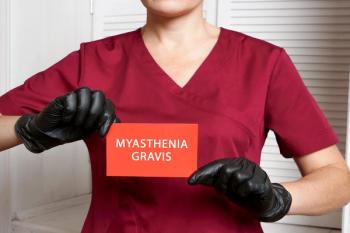
Active Hexose-Correlated Compound Shows Effectiveness in CLL
Efficacy against chronic lymphocytic leukemia (CLL) was seen when tested as both a single agent and in combination with antitumor antibody.
Active hexose-correlated compound (AHCC) was shown to be both directly and indirectly effective against
AHCC is a nontoxic mushroom extract that has been found to improve quality of life and lead to a better prognosis for patients with a variety of types of cancers. CLL is the most common version of leukemia in adults in the United States, yet not all patients positively respond to the first line of treatment.
A key factor in proliferating the microenvironment for CLL is nurse-like cells (NLCs), which provide survival signals to CLL cells and work to protect against CLL cell death that can be caused by treatment with agents, such as dexamethasone. Investigators aimed to gain a better understanding of the potential for AHCC to attack NLCs in patients who have CLL and treat the disease, given the agent’s ability to promote positive cell responses in different cancer types.
The investigators first tested the direct effects of AHCC on CLL cell viability. AHCC at concentrations of 2 and 5 mg/mL was shown to significantly reduce CLL cell counts, with the percentages of viable cells in each group being significantly lowered in addition.
After 7 days, there was apoptosis of around 95% of CLL cells; after 14 days, examinations indicated a concentration-dependent decrease in the number of CLL cells, with an almost complete reduction by 10 mg/mL. These results suggest a direct effect on the depletion of CLL cells in vitro from AHCC, even after a single treatment, the researchers wrote.
Next, they sought to determine whether AHCC had any indirect effects on CLL cells through impacting surrounding NLCs. Using isolated peripheral blood mononuclear cells from patients, the investigators treated these cultures with 5 and 10 mg/mL of AHCC. This led to a significant reduction in the number of NLCs.
To determine the effects in vivo, AHCC was tested in a mouse model of CLL, which has been shown to mimic human CLL. Over 8 weeks of white blood cell testing, AHCC-treated mice had significantly longer survival rates. Additionally, the testing of AHCC on a mouse model of acute myeloid leukemia (AML) proved similarly successful and indicated that AHCC can be beneficial against multiple diseases, the investigators found.
Lastly, the study authors tested whether AHCC would enhance the effects of immune-based therapy in vivo, specifically antibody therapy, as it is one of the most well-known immune-based treatments for CLL. After 8 weeks, comparisons indicated significant differences between the single-treatment mice groups and the AHCC/antibody combination group, with survival being significantly longer in the combination group.
Prior to this study, AHCC, a natural component, was known to contain a variety of molecules that have previously been shown to initiate the innate immune response, although its direct and indirect effects on patients with were unknown.
The findings in the AML model during the in vivo experiments suggested that AHCC had a direct effect on tumor cells, as the extract activated myeloid-lineage cells in the model. However, the investigators wrote that this prospect would require additional investigations.
Of particular importance to the investigators was the finding that AHCC enhanced the antibody treatment of CLL in vivo. This suggests that AHCC could be at its most effective when used in combination with immune-oriented therapies, although it is unknown if it would increase the effectiveness of other therapies, according to the investigators.
“These results help support the clinical testing of AHCC as a candidate agent for the treatment of CLL,” the researchers concluded.
Reference
Merchand-Reyes G, Santhanam R, Valencia-Pena ML, et al. Active hexose-correlated compound shows direct and indirect effects against chronic lymphocytic leukemia. Nutrients. 2023;15(24):5138. doi:10.3390/nu15245138
Newsletter
Stay ahead of policy, cost, and value—subscribe to AJMC for expert insights at the intersection of clinical care and health economics.







































